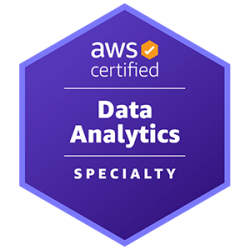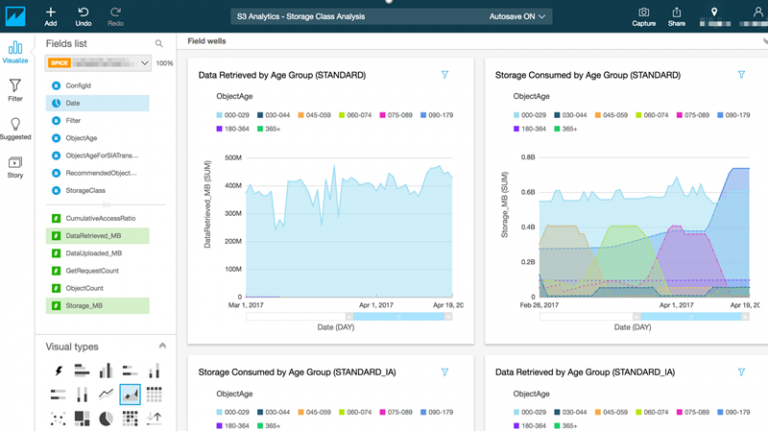Obiettivi | Certificazione | Contenuti | Tipologia | Prerequisiti | Durata e Frequenza | Docenti | Modalità di Iscrizione | Calendario

Il Corso Building Data Lakes on AWS (ANBDLK) è progettato per i partecipanti che desiderano imparare a progettare, costruire e gestire un data lake su AWS. I partecipanti impareranno come costruire un data lake operativo che supporti l’analisi di dati sia strutturati che non strutturati. Si acquisiranno le componenti e le funzionalità dei servizi coinvolti nella creazione di un data lake. Si utilizzerà AWS Lake Formation per creare un data lake, AWS Glue per creare un catalogo di dati e Amazon Athena per analizzare i dati. Il corso contribuisce alla preparazione per la Certificazione AWS Certified Data Analytics – Specialty.
Contattaci ora per ricevere tutti i dettagli e per richiedere, senza alcun impegno, di parlare direttamente con uno dei nostri Docenti (Clicca qui)
oppure chiamaci subito al nostro Numero Verde (800-177596)
Obiettivi del corso
Di seguito una sintesi degli obiettivi principali del corso Corso Building Data Lakes on AWS (ANBDLK):
- Imparare a progettare, costruire e gestire un data lake operativo su AWS che supporti l’analisi di dati sia strutturati che non strutturati.
- Acquisire conoscenza delle componenti e delle funzionalità dei servizi AWS coinvolti nella creazione di un data lake.
- Utilizzare AWS Lake Formation per creare un data lake, facilitando la configurazione, la sicurezza e la gestione del data lake.
- Impiegare AWS Glue per creare un catalogo di dati, facilitando la scoperta e la preparazione dei dati per l’analisi.
- Utilizzare Amazon Athena per analizzare i dati, permettendo di eseguire query SQL direttamente sui dati memorizzati nel data lake.
Certificazione del corso
Esame AWS Certified Data Analytics – Specialty;
L’esame di certificazione AWS Certified Data Analytics – Specialty (DAS-C01) è pensato per valutare le competenze avanzate dei candidati nella progettazione, implementazione e gestione di soluzioni di analisi dei dati su AWS. L’esame copre tematiche come la raccolta, il processamento e l’analisi di grandi quantità di dati, utilizzando servizi AWS come Kinesis, S3, Redshift e EMR.
L’obiettivo principale è assicurare che i candidati dimostrino una solida conoscenza delle best practice e delle soluzioni avanzate AWS per l’analisi dei dati. Durante l’esame, i candidati affronteranno argomenti quali l’integrazione di servizi AWS e di terze parti per l’analisi dei dati, l’ottimizzazione delle prestazioni e l’implementazione di soluzioni di sicurezza.
Contenuti del corso
Module 1: Introduction to data lakes
- Describe the value of data lakes
- Compare data lakes and data warehouses
- Describe the components of a data lake
- Recognize common architectures built on data lakes
Module 2: Data ingestion, cataloging, and preparation
- Describe the relationship between data lake storage and data ingestion
- Describe AWS Glue crawlers and how they are used to create a data catalog
- Identify data formatting, partitioning, and compression for efficient storage and query
- Lab 1: Set up a simple data lake
Module 3: Data processing and analytics
- Recognize how data processing applies to a data lake
- Use AWS Glue to process data within a data lake
- Describe how to use Amazon Athena to analyze data in a data lake
Module 4: Building a data lake with AWS Lake Formation
- Describe the features and benefits of AWS Lake Formation
- Use AWS Lake Formation to create a data lake
- Understand the AWS Lake Formation security model
- Lab 2: Build a data lake using AWS Lake Formation
Module 5: Additional Lake Formation configurations
- Automate AWS Lake Formation using blueprints and workflows
- Apply security and access controls to AWS Lake Formation
- Match records with AWS Lake Formation FindMatches
- Visualize data with Amazon QuickSight
- Lab 3: Automate data lake creation using AWS Lake Formation blueprints
- Lab 4: Data visualization using Amazon QuickSight
Module 6: Architecture and course review
- Post course knowledge check
- Architecture review
Tipologia
Corso di Formazione con Docente
Docenti
I docenti sono Istruttori accreditati Amazon AWS e certificati in altre tecnologie IT, con anni di esperienza pratica nel settore e nella Formazione.
Infrastruttura laboratoriale
Per tutte le tipologie di erogazione, il Corsista può accedere alle attrezzature e ai sistemi presenti nei Nostri laboratori o direttamente presso i data center del Vendor o dei suoi provider autorizzati in modalità remota h24. Ogni partecipante dispone di un accesso per implementare le varie configurazioni avendo così un riscontro pratico e immediato della teoria affrontata. Ecco di seguito alcuni scenari tratti dalle attività laboratoriali:

Dettagli del corso
Prerequisiti
Si consiglia la partecipazione al Corso AWS Technical Essentials e al Corso Data Analytics Fundamentals.
Durata del corso
Durata Intensiva 1gg.
Frequenza
Varie tipologie di Frequenza Estensiva ed Intensiva.
Date del corso
- Building Data Lakes on AWS (Formula Intensiva) – Su Richiesta – 09:00/17:00
Modalità di iscrizione
Le iscrizioni sono a numero chiuso per garantire ai tutti i partecipanti un servizio eccellente. L’iscrizione avviene richiedendo di essere contattati dal seguente Link, o contattando la sede al numero verde 800-177596 o inviando una richiesta all’email [email protected].


